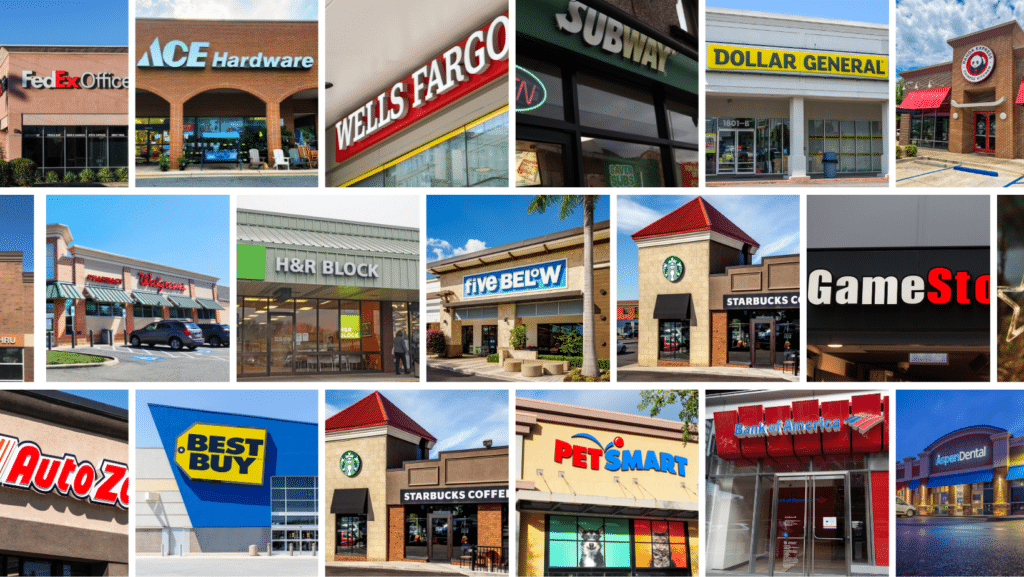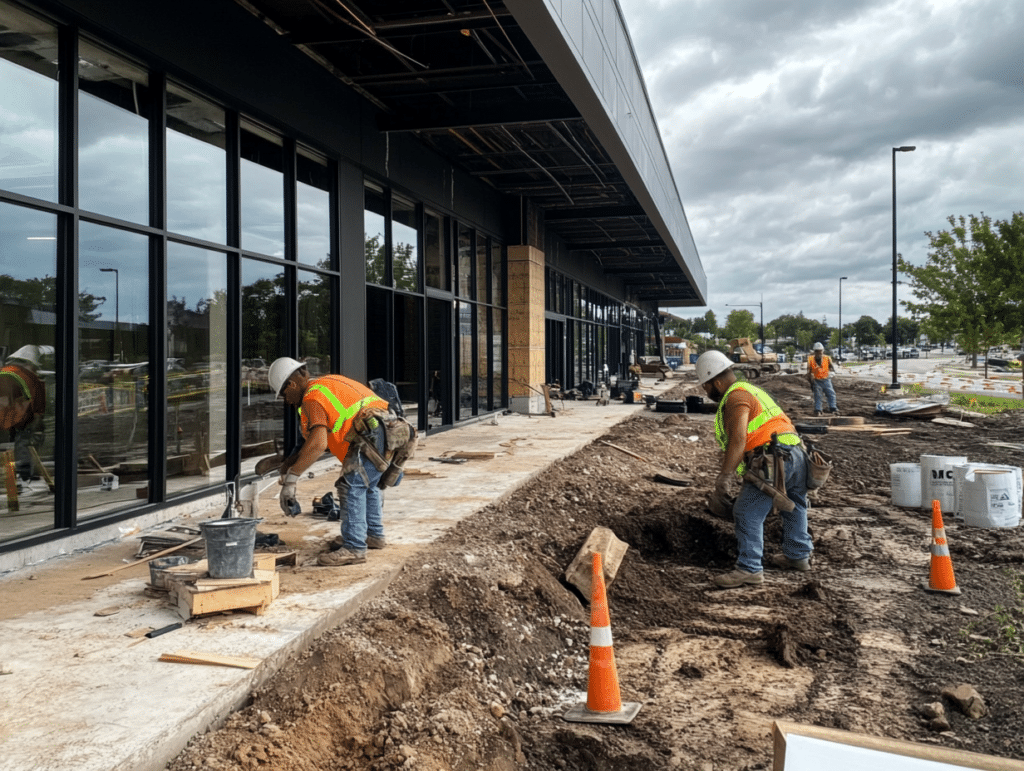While some real estate sectors face high vacancies and changing consumer behavior, retail strip centers are experiencing record demand—and investors paying attention now may be positioned to benefit.
With limited new supply, high occupancy rates, and tenants that thrive in any economy, strip centers are becoming a go-to asset class for passive investors seeking potential income-generating opportunities.
Here’s why they’re standing out in today’s market.
1. Record-High Occupancy Rates and Low Vacancy

Filling retail space is one of the biggest challenges in commercial real estate. But what if that wasn’t a concern?
Retail Strip Centers Are in Demand
According to CBRE, the retail availability rate is expected to fall by 20 basis points, ending the year at 4.6%. Open-air neighborhood, community, and strip centers are projected to see increased demand as retailers focus more on facilitating pickups and returns of online purchases. (Source)
- Retail availability rates are near historic lows, meaning fewer empty spaces for landlords.
- Service-based and essential retailers are driving demand, keeping leasing activity strong.
- Some regions are reporting even lower vacancy rates, showing continued strength in the market.
Why This Matters for Investors
When occupancy remains high, investors may benefit from potential consistent rental income and reduced turnover risk, which can help offset operational costs.
2. Diverse Tenant Mix Helps Investment Potential

What happens if one tenant leaves? In single-tenant properties, that’s a major issue. In strip centers, it’s a different story.
Service-Based Tenants Drive Stability
Unlike traditional malls or standalone retail buildings, strip centers often feature a mix of businesses, including:
✔ Service-based tenants (medical offices, fitness centers, salons) that rely on in-person visits.
✔ Quick-service restaurants that attract repeat customers.
✔ Retailers with omnichannel strategies that combine online and in-person shopping.
According to CBRE, open-air neighborhood, community, and strip centers are expected to see increased demand as retailers focus more on facilitating pickups and returns of online purchases. (Source)
Why This Matters for Investors
With multiple tenants, rental income isn’t reliant on just one business. This mix can help reduce risk and support long-term occupancy.
3. Supply is Limited, But Demand is Growing

When demand outpaces supply, existing properties may become more valuable. And that’s exactly what’s happening in strip centers.
New Retail Construction Has Slowed
Over the past decade, new strip center development has remained low. Data from CBRE indicates that limited new development has contributed to a tight retail market, with the overall retail availability rate remaining at 4.7% in Q4. (Source)
- Developers are focusing on redevelopments rather than new builds, leaving fewer brand-new properties available.
- Retailers are competing for well-located strip centers, driving up occupancy and leasing rates.
Why This Matters for Investors
As supply remains tight, existing strip centers may continue to see strong leasing demand, making well-positioned properties attractive investment options.
4. Strip Centers Are Thriving in the E-Commerce Era

Retail is changing, but strip centers are evolving alongside it.
Retailers Are Using Strip Centers for More Than Just Shopping
Many businesses now rely on physical stores for:
✔ Same-day order pickups & returns—meeting consumer demand for convenience.
✔ Last-mile fulfillment—helping online retailers deliver faster.
✔ Service-driven experiences—medical clinics, wellness brands, and dining tenants that can’t be replicated online.
CBRE reports that open-air neighborhood, community, and strip centers will see increased demand as retailers focus more on facilitating pickups and returns of online purchases. (Source)
Why This Matters for Investors
As shopping habits evolve, strip centers are adapting—keeping them relevant and in demand.
How FNRP Finds High-Performing Strip Centers for Investors
At First National Realty Partners (FNRP), we focus on acquiring and managing high-quality strip centers by prioritizing:
✔ Market Research – Identifying high-demand locations with strong demographics.
✔ Tenant Selection – Acquiring strip centers with a diverse mix of national and service-based tenants.
✔Average Tenant Tenure – Assessing tenant stability and lease length to ensure long-term occupancy.
✔ Value-Add Potential – Improving leasing strategies and enhancing tenant mix to increase potential returns.
✔ Comprehensive Due Diligence – Evaluating tenant stability, market trends, and investment potential.
Interested in investing in strip centers? See FNRP’s current offerings by clicking the button below.
Disclaimer: An investment in commercial real estate is speculative and subject to risk, including the risk that all of your investment may be lost. Securities are only available to verified accredited investors who can bear the loss of their investment. FNRP and its affiliates do not provide investment, financial, tax, legal or accounting advice. The contents of this e-mail have been prepared for informational purposes only, and are not intended to provide, and should not be relied on for, investment, financial, tax, legal or accounting advice. You should consult your own investment, financial, tax, legal and accounting advisors before engaging in any transaction.


